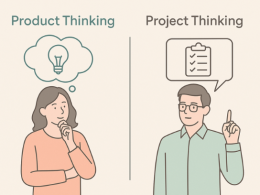Do you ever find yourself lost in the mesmerizing world of Pinterest, scrolling through a sea of creativity and inspiration?
Well, you’re not alone!
Pinterest is more than just a platform; it’s a virtual wonderland where ideas take flight and dreams come to life. For content creators and businesses, mastering the art of retaining users’ interest is like holding the key to a treasure chest of endless possibilities.
So, are you ready to embark on a thrilling journey?
In this blog, we’re going to unlock the secrets of Pinterest’s User Retention Policy. We’ll unravel the strategies and techniques that not only boost engagement but also keep your audience captivated and yearning for more.
Are you intrigued?
Great, let’s dive in!
1. Understanding Pinterest User Retention
Before we dive into the strategies, let’s grasp what user retention means on Pinterest.
User retention is the ability to keep users actively engaged and returning to your Pinterest profile and content. This isn’t merely about accumulating followers; it’s about building a loyal and interactive community.
But let’s not stop there. It’s always inspiring to learn from the success stories of those who’ve paved the way. Take, for instance, the story of Ben Silbermann, one of Pinterest’s co-founders. Ben began his tech career in Google’s customer support department, where he admired the company’s vision but yearned for a more creative role that allowed him to build products.
With the support of his girlfriend (now wife), Divya, and his college friend Paul Sciarra, he created an app called “Tote” in 2009, initially intended as a “catalog for the phone.” Tote allowed users to catalog their favorite items and receive alerts when they were on sale.
However, users had a different idea and used it to share their collections, sparking a realization of people’s inherent desire to connect through shared interests.
And just like that, Pinterest was born, allowing users to “pin” whatever interests them and add it to their personal collections. The platform quickly became a hit, entering the global market. Yet, despite Pinterest’s immense success within the US, it faced challenges in retaining users globally.
The team at Pinterest realized that the primary reason users churned was that something obstructed them from realizing the product’s core value—building personal collections.
Pinterest’s Challenge: Helping customers quickly realize the core value.
One of the roadblocks was the term “Pin It,” which users outside of the US couldn’t easily relate to, despite its simple function of saving items to their collections.
How did Pinterest overcome this challenge?
Casey Winters, former growth product lead at Pinterest, suggested changing the “Pin It” feature to “Save,” especially for users outside of the US. This subtle change made a significant impact, helping users worldwide better understand the feature’s purpose.
As of the third quarter of 2022, Pinterest boasts over 445 million monthly users worldwide, exploring various “ideas” to build collections for sharing with their friends.
Casey Winters concludes in a product management case study that ensuring users grasp your product’s core value is pivotal in solving most growth challenges.
2. The Power of a Strong First Impression
Your Pinterest profile serves as your digital storefront, and just as in the physical world, making a stellar first impression is non-negotiable. Your profile is the visitor’s initial point of contact, and it’s here that you have the opportunity to captivate and retain their interest.
Begin with an eye-catching profile picture, a bio that sparks curiosity, and well-organized boards that reflect your niche or areas of interest.
Additionally, strategically employ keywords relevant to your niche to enhance discoverability. This not only entices visitors to hit that “Follow” button but also ensures they stick around to explore your content further.
3. Content Quality and Relevance
In the visually-driven realm of Pinterest, the adage “a picture is worth a thousand words” couldn’t be more apt. The quality of your pins and images is of paramount importance. Your content should be visually appealing, well-composed, and, most importantly, capable of conveying a story or a message.
However, it’s not just about aesthetics; relevance plays a pivotal role. Your content should seamlessly align with the interests of your target audience. When you consistently deliver high-quality and relevant content, you not only capture their attention but also hold it, encouraging users to explore more of what you have to offer.
4. Consistency Is Key
Consistency is not merely a suggestion; it’s a fundamental principle of user retention on Pinterest. By maintaining a regular posting schedule, you not only keep your audience engaged but also send a signal to Pinterest’s algorithm that your profile is active and relevant.
It’s a surefire way to ensure that your content regularly appears in your followers’ feeds, enhancing your chances of staying top-of-mind.
5. Personalization and the User Experience
Personalization plays a pivotal role in Pinterest’s user retention dynamics. It’s the culmination of user interaction, engagement, and personal preferences.
The more a user interacts with your content, the better Pinterest becomes at showing them relevant pins.
Encourage your audience to save, comment, and engage with your pins, as these interactions not only enrich their Pinterest experience but also reinforce your presence in their personalized content stream.
In essence, you’re not just creating content; you’re crafting an experience tailored to each user, which keeps them coming back for more.
6. Community Building and Collaboration
Beyond individual engagement, building a sense of community is a powerful retention strategy. By actively interacting with your audience, responding to comments, and creating opportunities for collaboration, you foster a deeper sense of connection and loyalty.
Hosting contests, partnering with other pinners in your niche, and initiating conversations can create a vibrant community around your profile. This fosters a sense of belonging and drives user retention through a shared sense of purpose and shared experiences.
7. Measuring and Adapting to Improve Retention
Data is your ally in the quest for user retention. Pinterest offers invaluable analytics tools that enable you to gain insights into what’s working and what’s not. It’s more than just numbers; it’s about understanding user behavior and preferences.
By leveraging this data, you can adapt and refine your strategies to enhance user retention continually. It’s a dynamic process of improvement and refinement, ensuring that your Pinterest presence remains effective and engaging.
In summary, user retention on Pinterest isn’t a one-size-fits-all concept. It’s a multifaceted strategy encompassing both the art of building connections and the science of data-driven decision-making.
By mastering these principles, you can create an enduring and engaging Pinterest presence that keeps your audience captivated and returning for more.
With these tactics, you’ll be well on your way to creating a thriving Pinterest community that keeps coming back for more.
So, get out there and start pinning your way to success!
 Pin
PinReady to explore more exciting case studies and elevate your Product Management skills?
Join Accredian’s Product Management community now!






